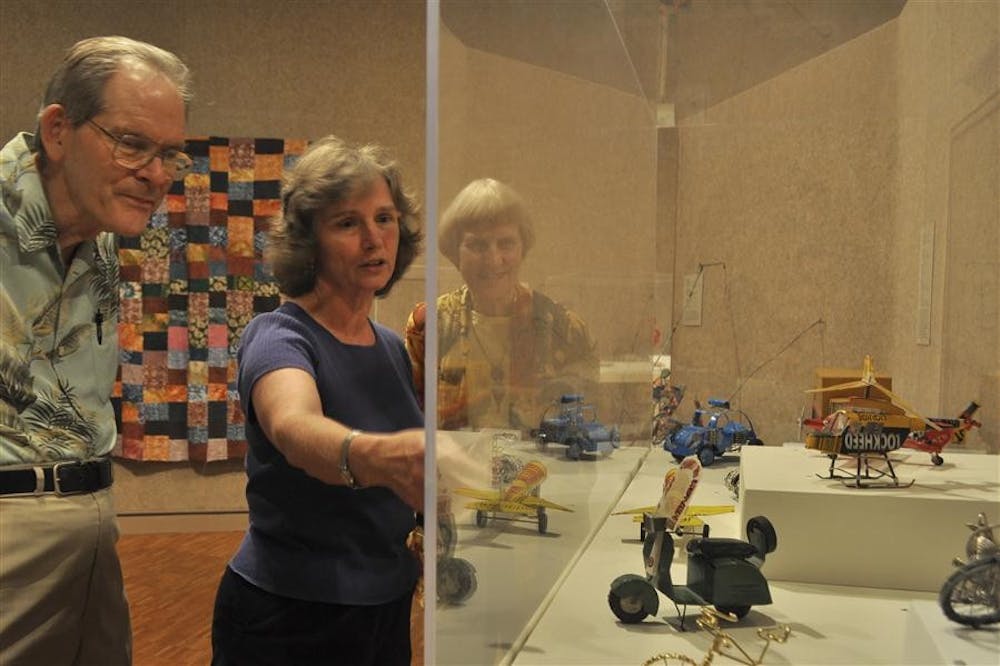While walking around campus during the day, you might notice a red, circular sculpture in a patch of grass.
At night, the colored lights illuminating the entire length of the building behind it cannot be missed.
This is the IU Art Museum, and with a surprising collection of some of the world’s greatest art right in the middle of campus, it’s a great way to spend a day.
The art starts before visitors even enter the building.
The museum itself was designed as a work of art by the Chinese architect Ieoh Ming Pei, who intended to design the entire building without using any right angles.
The colored lights outside are also a work of art done by professor of lighting design, Robert Shakespeare. The red circle is called the Indiana Arc by Charles Perry.
The museum boasts more than 30,000 pieces of artwork in its collection, most of which are in storage.
The pieces that are on display number about 1,400.
There are three permanent displays in the museum, featuring world-renowned artists such as Pablo Picasso and Jackson Pollock.
The museum also has a special exhibitions gallery with a transitory display of artwork done by traveling shows or the curators of the museum.
“It’s world-class art. We have a really wonderful collection — an unusually great collection for a university museum,” said Linda Baden, associate director for editorial services.
This tradition of great artwork was started by the original director of the museum, Dr. Henry Hope.
Under the guidance of the second director of the museum, Thomas Solley, the collection expanded from about 5,000 to more than 30,000 pieces of artwork.
“The museum was conceived by President Herman B Wells. His idea was that any quality university has to have an art museum with high-quality artwork, that the experience of works of art in the original was essential to the complete education of the student,” Baden said. “We believe that experiencing original works of art really does enrich people’s lives and gives them insight into the very highest level of human functioning and speaks to people in ways that the written word can’t and music can’t.”
Explore the IU Art Museum

Get stories like this in your inbox
Subscribe





